




 Archean Eon
Archean Eon
(4,600MYA - 2,500MYA)
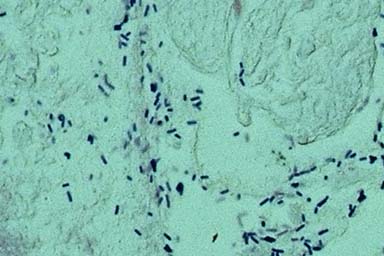 The Archean Eon begins with the formation of the Earth 4.6 Billion years ago.
Around 3.9 Billion years ago, the first life on Earth in the form of bacteria appeared.
Bacteria, the simplest form of life, consists of single-celled organisms without any nucleus, basically bags of chemicals floating about.
Cells without nuclei are called
prokaryotes in the scientific world.
[NSPL]
The Archean Eon begins with the formation of the Earth 4.6 Billion years ago.
Around 3.9 Billion years ago, the first life on Earth in the form of bacteria appeared.
Bacteria, the simplest form of life, consists of single-celled organisms without any nucleus, basically bags of chemicals floating about.
Cells without nuclei are called
prokaryotes in the scientific world.
[NSPL]





 Molecules
(10,000 Millions Years Ago)
Molecules
(10,000 Millions Years Ago)
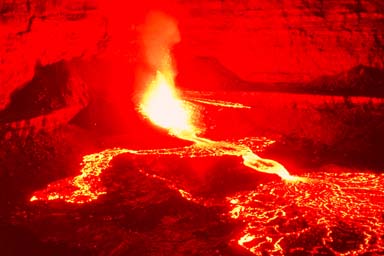 Elemental particles
congealed in the still hot proto-universe to form molecular globs of various
atoms.
[NS]
Elemental particles
congealed in the still hot proto-universe to form molecular globs of various
atoms.
[NS]





 Amino Acids
Amino Acids
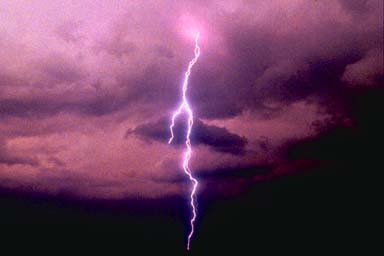 The Early Earth's ocean was a soup of carbon compounds. Combinations of carbon compounds
were drawn
together to form Amino
Acids. Perhaps accelerated by lightening or the extreme
heat of the period, or perhaps just because of
the extraordinarily
long interval of time
involved, these Amino Acids in turn grouped together to form the
self-replicating nucleic
acids
known as RNA and DNA molecules, the basis of all life on Earth.
[NSGE]
The Early Earth's ocean was a soup of carbon compounds. Combinations of carbon compounds
were drawn
together to form Amino
Acids. Perhaps accelerated by lightening or the extreme
heat of the period, or perhaps just because of
the extraordinarily
long interval of time
involved, these Amino Acids in turn grouped together to form the
self-replicating nucleic
acids
known as RNA and DNA molecules, the basis of all life on Earth.
[NSGE]





 Nucleic Acids
Nucleic Acids
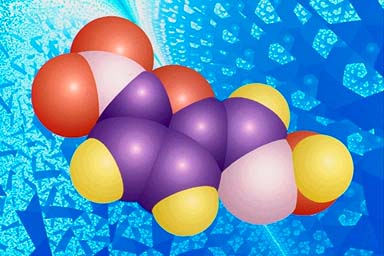 Self-replicating
carbon molecules called DNA are the basis of life on earth. DNA is composed of two
parallel
chains of
sugar-phosphate molecules bonded together by amino acids. Because of electrical
attractions, these
strands become
intertwined into a double helix. These strands unravel by
disconnecting the bonding amino acids and
rebond to amino acids
floating around in the mix.
In this way, one DNA strand becomes two. This is reproduction in its
simplest form.
[NSGE]
Self-replicating
carbon molecules called DNA are the basis of life on earth. DNA is composed of two
parallel
chains of
sugar-phosphate molecules bonded together by amino acids. Because of electrical
attractions, these
strands become
intertwined into a double helix. These strands unravel by
disconnecting the bonding amino acids and
rebond to amino acids
floating around in the mix.
In this way, one DNA strand becomes two. This is reproduction in its
simplest form.
[NSGE]





 Cells
Cells
 A drop of oil in water can demonstrate the power of
surface tension in forming a cell wall between two
dissimilar
materials like oil (a
non-polar carbon compound) and water (a polar molecule). Non-polar molecules and
atoms along
a
boundary tend to be only partially bonded so they attract charged polar molecules. Soon,
polar carbon
compounds would
congregate along the perimeter of the cell wall, fortifying it.
[NSPL]
A drop of oil in water can demonstrate the power of
surface tension in forming a cell wall between two
dissimilar
materials like oil (a
non-polar carbon compound) and water (a polar molecule). Non-polar molecules and
atoms along
a
boundary tend to be only partially bonded so they attract charged polar molecules. Soon,
polar carbon
compounds would
congregate along the perimeter of the cell wall, fortifying it.
[NSPL]






Prokaryotic Cells
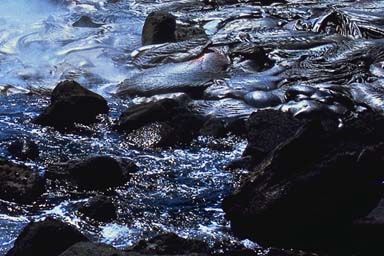 Once carbon compounds became prevalent in the Earth's
soupy ocean, combinations of carbon compounds
were drawn together to
form cellular bodies.
These bags of chemicals captured amino acids and other carbon compounds which
were used by
the cell
to break down substances for food. Cells without a nucleus are called prokaryotic
in the scientific
world.
[NSPL]
Once carbon compounds became prevalent in the Earth's
soupy ocean, combinations of carbon compounds
were drawn together to
form cellular bodies.
These bags of chemicals captured amino acids and other carbon compounds which
were used by
the cell
to break down substances for food. Cells without a nucleus are called prokaryotic
in the scientific
world.
[NSPL]





 Proterozoic Eon
(2,500MYA -
550MYA)
Proterozoic Eon
(2,500MYA -
550MYA)
 The Proterozoic Eon begins with an ocean teeming with bacteria around 2.5 Billion years ago.
Algae
arose next, 1.5 Billion
years ago. Algae is the first single cell to have its own
nucleus. Cells with a nucleus are called
eukaryotic in the
scientific world. Eventually, 1
Billion years ago, these single algae cells grew together in masses -
the first
multi-cellular organisms, the first aquatic plants, leading us into the Phanerozoic Eon.
[NSPL]
The Proterozoic Eon begins with an ocean teeming with bacteria around 2.5 Billion years ago.
Algae
arose next, 1.5 Billion
years ago. Algae is the first single cell to have its own
nucleus. Cells with a nucleus are called
eukaryotic in the
scientific world. Eventually, 1
Billion years ago, these single algae cells grew together in masses -
the first
multi-cellular organisms, the first aquatic plants, leading us into the Phanerozoic Eon.
[NSPL]






Eukaryotic Cells
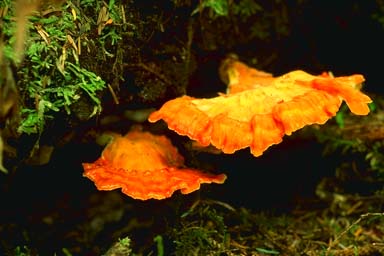 Cells with a nucleus are called eukaryotic in the
scientific world. This nucleus may have arisen from
one bacteria
digesting another, the pair
then continuing to live symbiotically. Perhaps the digested cell had
special DNA abilities.
The digesting cell may have had superior cell wall characteristics. All animals and plants
are
multi-cellular eukaryotic
organisms. Fungi have multi-cellular organisms with more than
one nuclei.
[NSPL]
Cells with a nucleus are called eukaryotic in the
scientific world. This nucleus may have arisen from
one bacteria
digesting another, the pair
then continuing to live symbiotically. Perhaps the digested cell had
special DNA abilities.
The digesting cell may have had superior cell wall characteristics. All animals and plants
are
multi-cellular eukaryotic
organisms. Fungi have multi-cellular organisms with more than
one nuclei.
[NSPL]





 Phanerozoic Eon
(550MYA -
now)
Phanerozoic Eon
(550MYA -
now)
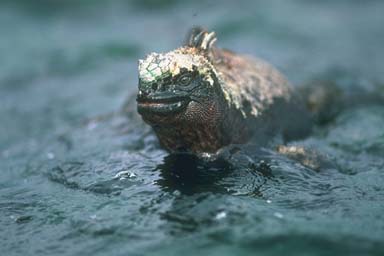 The Phanerozoic Eon begins with the Cambrian rock-building period and continues to the
present time.
Aquatic multicellular
organisms formed during the Proterozoic Eon flourish,
evolve and move onto land during this period.
This takes us to the
present time.
[NSPL]
The Phanerozoic Eon begins with the Cambrian rock-building period and continues to the
present time.
Aquatic multicellular
organisms formed during the Proterozoic Eon flourish,
evolve and move onto land during this period.
This takes us to the
present time.
[NSPL]





 Jurassic Period
(208MYA - 144MYA)
Jurassic Period
(208MYA - 144MYA)
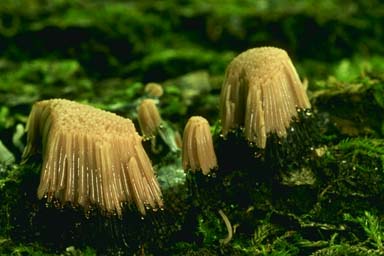 It is not hard to see how animals could have evolved from
early plant-like cells when one
considers organisms like the slime molds which seem to
straddle the line dividing the
plant kingdom from the animals. Slime molds are just like
Protozoa at one stage of the
life cycle and like plants in the reproductive phase.
It is not hard to see how animals could have evolved from
early plant-like cells when one
considers organisms like the slime molds which seem to
straddle the line dividing the
plant kingdom from the animals. Slime molds are just like
Protozoa at one stage of the
life cycle and like plants in the reproductive phase.
[NS]





 Duck-Billed Dinosaur
(?MYA)
Duck-Billed Dinosaur
(?MYA)
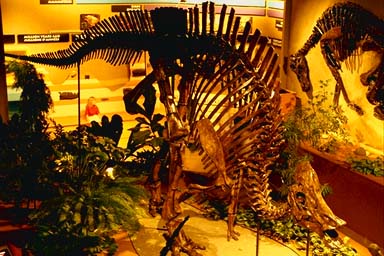 Duck-Billed Dinosaur
[NS]
Duck-Billed Dinosaur
[NS]





 Duck-Billed Dinosaur #2
(?MYA)
Duck-Billed Dinosaur #2
(?MYA)
 Duck-Billed Dinosaur #2
[NS]
Duck-Billed Dinosaur #2
[NS]





 Wooly Mammoth
(?MYA)
Wooly Mammoth
(?MYA)
 Wooly Mammoth
[NS]
Wooly Mammoth
[NS]





 Saber-Toothed Tiger
(?MYA)
Saber-Toothed Tiger
(?MYA)
 Saber-Toothed Tiger
[NS]
Saber-Toothed Tiger
[NS]





 Tyrannosaurus Rex
(?MYA)
Tyrannosaurus Rex
(?MYA)
 Tyrannosaurus
Rex
[NS]
Tyrannosaurus
Rex
[NS]





 Dinosaur Cartoon
(?MYA)
Dinosaur Cartoon
(?MYA)
 Dinosaur Cartoon
[NS]
Dinosaur Cartoon
[NS]





 Dinosaur Cartoon #2
(?MYA)
Dinosaur Cartoon #2
(?MYA)
 Dinosaur Cartoon #2
[NS]
Dinosaur Cartoon #2
[NS]





 Dinosaur Excavation
(?MYA)
Dinosaur Excavation
(?MYA)
 Dinosaur Excavation
[NS]
Dinosaur Excavation
[NS]





 Dinosaur Provincial Park - Badlands, Alberta
Dinosaur Provincial Park - Badlands, Alberta
 Dinosaur Provincial Park - Badlands, Alberta
[NS]
Dinosaur Provincial Park - Badlands, Alberta
[NS]





 Dinosaur Provincial Park - Badlands, Alberta #2
Dinosaur Provincial Park - Badlands, Alberta #2
 Dinosaur Provincial Park - Badlands, Alberta #2
[NS]
Dinosaur Provincial Park - Badlands, Alberta #2
[NS]





 Ice Age
Ice Age
 Ice Age
[NS]
Ice Age
[NS]





 Volcano
Volcano
 Volcano
[NS]
Volcano
[NS]





 Lava
Lava
 Lava
[NS]
Lava
[NS]





 The Crust
Forms
The Crust
Forms
 The Crust Forms
[NS]
The Crust Forms
[NS]





 The Record of the Rocks
The Record of the Rocks
 The Record
of the Rocks are the Earth's diary. Layers of material, consisting of dirt, silt and dead
and decaying animal life, gradually build up. The combined weight of these layers compresses
the lower
layers and, over millions of years, sedimentary rock is formed. The sedimentary
layers are easily
visible in situations where rivers have carved paths through relatively
soft rock. The study of these
layers provides valuable clues about how life and the
environment have changed.
[NS]
The Record
of the Rocks are the Earth's diary. Layers of material, consisting of dirt, silt and dead
and decaying animal life, gradually build up. The combined weight of these layers compresses
the lower
layers and, over millions of years, sedimentary rock is formed. The sedimentary
layers are easily
visible in situations where rivers have carved paths through relatively
soft rock. The study of these
layers provides valuable clues about how life and the
environment have changed.
[NS]
 Webpages that Work! Zeuter Development Corporation
Webpages that Work! Zeuter Development Corporation
Post Office Box 225, Parry Sound, Ontario, CANADA P2A 2X3
Copyright © Zeuter Development Corporation, 1996-2022. All rights reserved.
 The Archean Eon begins with the formation of the Earth 4.6 Billion years ago.
Around 3.9 Billion years ago, the first life on Earth in the form of bacteria appeared.
Bacteria, the simplest form of life, consists of single-celled organisms without any nucleus, basically bags of chemicals floating about.
Cells without nuclei are called
prokaryotes in the scientific world.
[NSPL]
The Archean Eon begins with the formation of the Earth 4.6 Billion years ago.
Around 3.9 Billion years ago, the first life on Earth in the form of bacteria appeared.
Bacteria, the simplest form of life, consists of single-celled organisms without any nucleus, basically bags of chemicals floating about.
Cells without nuclei are called
prokaryotes in the scientific world.
[NSPL] Elemental particles
congealed in the still hot proto-universe to form molecular globs of various
atoms.
[NS]
Elemental particles
congealed in the still hot proto-universe to form molecular globs of various
atoms.
[NS] The Early Earth's ocean was a soup of carbon compounds. Combinations of carbon compounds
were drawn
together to form Amino
Acids. Perhaps accelerated by lightening or the extreme
heat of the period, or perhaps just because of
the extraordinarily
long interval of time
involved, these Amino Acids in turn grouped together to form the
self-replicating nucleic
acids
known as RNA and DNA molecules, the basis of all life on Earth.
[NSGE]
The Early Earth's ocean was a soup of carbon compounds. Combinations of carbon compounds
were drawn
together to form Amino
Acids. Perhaps accelerated by lightening or the extreme
heat of the period, or perhaps just because of
the extraordinarily
long interval of time
involved, these Amino Acids in turn grouped together to form the
self-replicating nucleic
acids
known as RNA and DNA molecules, the basis of all life on Earth.
[NSGE] Self-replicating
carbon molecules called DNA are the basis of life on earth. DNA is composed of two
parallel
chains of
sugar-phosphate molecules bonded together by amino acids. Because of electrical
attractions, these
strands become
intertwined into a double helix. These strands unravel by
disconnecting the bonding amino acids and
rebond to amino acids
floating around in the mix.
In this way, one DNA strand becomes two. This is reproduction in its
simplest form.
[NSGE]
Self-replicating
carbon molecules called DNA are the basis of life on earth. DNA is composed of two
parallel
chains of
sugar-phosphate molecules bonded together by amino acids. Because of electrical
attractions, these
strands become
intertwined into a double helix. These strands unravel by
disconnecting the bonding amino acids and
rebond to amino acids
floating around in the mix.
In this way, one DNA strand becomes two. This is reproduction in its
simplest form.
[NSGE] A drop of oil in water can demonstrate the power of
surface tension in forming a cell wall between two
dissimilar
materials like oil (a
non-polar carbon compound) and water (a polar molecule). Non-polar molecules and
atoms along
a
boundary tend to be only partially bonded so they attract charged polar molecules. Soon,
polar carbon
compounds would
congregate along the perimeter of the cell wall, fortifying it.
[NSPL]
A drop of oil in water can demonstrate the power of
surface tension in forming a cell wall between two
dissimilar
materials like oil (a
non-polar carbon compound) and water (a polar molecule). Non-polar molecules and
atoms along
a
boundary tend to be only partially bonded so they attract charged polar molecules. Soon,
polar carbon
compounds would
congregate along the perimeter of the cell wall, fortifying it.
[NSPL] Once carbon compounds became prevalent in the Earth's
soupy ocean, combinations of carbon compounds
were drawn together to
form cellular bodies.
These bags of chemicals captured amino acids and other carbon compounds which
were used by
the cell
to break down substances for food. Cells without a nucleus are called prokaryotic
in the scientific
world.
[NSPL]
Once carbon compounds became prevalent in the Earth's
soupy ocean, combinations of carbon compounds
were drawn together to
form cellular bodies.
These bags of chemicals captured amino acids and other carbon compounds which
were used by
the cell
to break down substances for food. Cells without a nucleus are called prokaryotic
in the scientific
world.
[NSPL] The Proterozoic Eon begins with an ocean teeming with bacteria around 2.5 Billion years ago.
Algae
arose next, 1.5 Billion
years ago. Algae is the first single cell to have its own
nucleus. Cells with a nucleus are called
eukaryotic in the
scientific world. Eventually, 1
Billion years ago, these single algae cells grew together in masses -
the first
multi-cellular organisms, the first aquatic plants, leading us into the Phanerozoic Eon.
[NSPL]
The Proterozoic Eon begins with an ocean teeming with bacteria around 2.5 Billion years ago.
Algae
arose next, 1.5 Billion
years ago. Algae is the first single cell to have its own
nucleus. Cells with a nucleus are called
eukaryotic in the
scientific world. Eventually, 1
Billion years ago, these single algae cells grew together in masses -
the first
multi-cellular organisms, the first aquatic plants, leading us into the Phanerozoic Eon.
[NSPL] Cells with a nucleus are called eukaryotic in the
scientific world. This nucleus may have arisen from
one bacteria
digesting another, the pair
then continuing to live symbiotically. Perhaps the digested cell had
special DNA abilities.
The digesting cell may have had superior cell wall characteristics. All animals and plants
are
multi-cellular eukaryotic
organisms. Fungi have multi-cellular organisms with more than
one nuclei.
[NSPL]
Cells with a nucleus are called eukaryotic in the
scientific world. This nucleus may have arisen from
one bacteria
digesting another, the pair
then continuing to live symbiotically. Perhaps the digested cell had
special DNA abilities.
The digesting cell may have had superior cell wall characteristics. All animals and plants
are
multi-cellular eukaryotic
organisms. Fungi have multi-cellular organisms with more than
one nuclei.
[NSPL] The Phanerozoic Eon begins with the Cambrian rock-building period and continues to the
present time.
Aquatic multicellular
organisms formed during the Proterozoic Eon flourish,
evolve and move onto land during this period.
This takes us to the
present time.
[NSPL]
The Phanerozoic Eon begins with the Cambrian rock-building period and continues to the
present time.
Aquatic multicellular
organisms formed during the Proterozoic Eon flourish,
evolve and move onto land during this period.
This takes us to the
present time.
[NSPL] It is not hard to see how animals could have evolved from
early plant-like cells when one
considers organisms like the slime molds which seem to
straddle the line dividing the
plant kingdom from the animals. Slime molds are just like
Protozoa at one stage of the
life cycle and like plants in the reproductive phase.
It is not hard to see how animals could have evolved from
early plant-like cells when one
considers organisms like the slime molds which seem to
straddle the line dividing the
plant kingdom from the animals. Slime molds are just like
Protozoa at one stage of the
life cycle and like plants in the reproductive phase. Duck-Billed Dinosaur
[NS]
Duck-Billed Dinosaur
[NS] Duck-Billed Dinosaur #2
[NS]
Duck-Billed Dinosaur #2
[NS] Wooly Mammoth
[NS]
Wooly Mammoth
[NS] Saber-Toothed Tiger
[NS]
Saber-Toothed Tiger
[NS] Tyrannosaurus
Rex
[NS]
Tyrannosaurus
Rex
[NS] Dinosaur Cartoon
[NS]
Dinosaur Cartoon
[NS] Dinosaur Cartoon #2
[NS]
Dinosaur Cartoon #2
[NS] Dinosaur Excavation
[NS]
Dinosaur Excavation
[NS] Dinosaur Provincial Park - Badlands, Alberta
[NS]
Dinosaur Provincial Park - Badlands, Alberta
[NS] Dinosaur Provincial Park - Badlands, Alberta #2
[NS]
Dinosaur Provincial Park - Badlands, Alberta #2
[NS] Ice Age
[NS]
Ice Age
[NS] Volcano
[NS]
Volcano
[NS] Lava
[NS]
Lava
[NS] The Crust Forms
[NS]
The Crust Forms
[NS] The Record
of the Rocks are the Earth's diary. Layers of material, consisting of dirt, silt and dead
and decaying animal life, gradually build up. The combined weight of these layers compresses
the lower
layers and, over millions of years, sedimentary rock is formed. The sedimentary
layers are easily
visible in situations where rivers have carved paths through relatively
soft rock. The study of these
layers provides valuable clues about how life and the
environment have changed.
[NS]
The Record
of the Rocks are the Earth's diary. Layers of material, consisting of dirt, silt and dead
and decaying animal life, gradually build up. The combined weight of these layers compresses
the lower
layers and, over millions of years, sedimentary rock is formed. The sedimentary
layers are easily
visible in situations where rivers have carved paths through relatively
soft rock. The study of these
layers provides valuable clues about how life and the
environment have changed.
[NS]